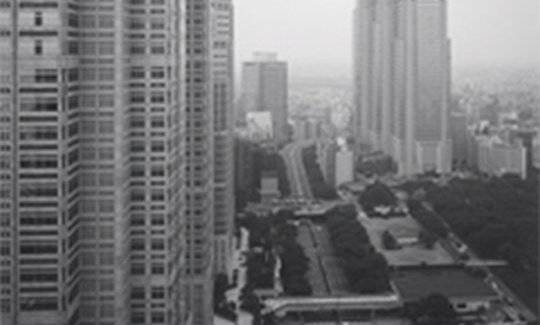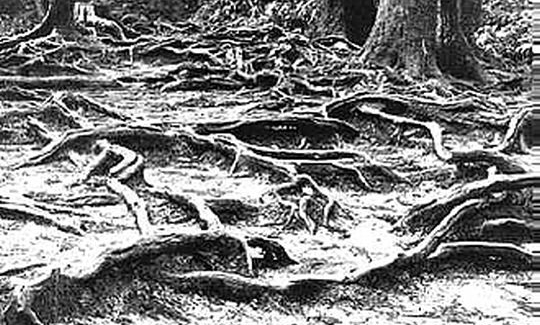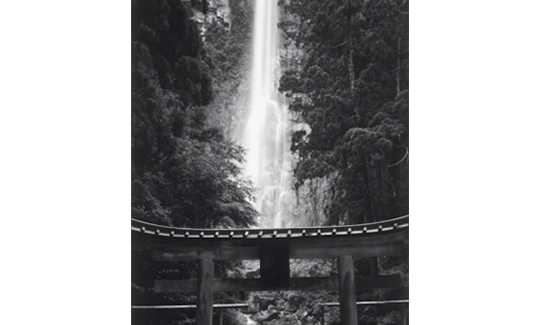In ancient Japan, artists, poets and monks were accustomed to travelling about the countryside and recording their experiences in paintings and poems. Especially renowned are the journeys of the poet-monk Saigyo (1118-1190), and the haiku poet Matsuo Basho (1644-1694).
The artist Kijuro Yahagi also decided to make such a journey in 1992, covering some 20,000 kilometres, during which he photographed landscapes, gardens, people, and the technological achievements of Japan. This collection of photographs has been published under the title "Hidden Japan".
When Yahagi set out on his photographic odyssey, he asked himself whether it would be possible to define his works as nature photography and, indeed, how to define "nature". It seemed to him that when people think of nature, they usually imagine a scene of cows grazing in a meadow. However, he soon realized that often the subjects of his works were created by people. Like a Zen riddle, he was struck by whether, in our time, "real" nature still exists, which is why he decided to use the term in inverted commas ("Nature"), and thus solve the problem for himself. When he did encounter the various elements comprising the "nature" of Japan, he discovered that they were always in motion, and thus became convinced that he would be able to record the 'nature' of Japan which, until that time, had always eluded him.
Kijuro Yahagi has thus understood that the concept of reality is different for everyone, and he tries, in his photographs, to catch the details that are the components of life in Japan today. Now, for instance, "nature" may be a field surrounded by mountains, the homes of fishermen in a small fishing port, houses on a mountainside, or a great city buzzing with pedestrians and traffic jams. "Nature" is so revealed as to be invisible.
Initially, Yahagi believed that a long journey with no definite destination would reveal little. Accordingly, he selected photographic sites and then travelled to them. Gradually he began to have doubts about this modus operandi, and his approach changed. First, he decided not to use the express trains that he had boarded in order to reach his destinations as fast as possible. He preferred to travel along the roads and lanes in the provinces and the cities. He then took to the tracks in the forests, and the pathways trodden by animals. To his surprise, he felt more at ease without hurrying to a fixed destination, without knowing which direction to take, or how far he would travel. In his wanderings throughout Japan, Yahagi selects the routes a man can take without hindrance, a journey across the planet, even a voyage in space; and in this context, "distance" no longer has any meaning for him.
During his travels, he was amazed to find that even the smallest fishing village, or the mountain nearest to it had a shrine or a Buddhist statue of Jizo, the deity who protects children. He also passed by "nature" created by man - gardens designed to look natural. He saw stone gardens, abstractions of sea, islands, and sky, and was impressed by so much creative ability in the artists who made them, by their respect for "nature". He also saw much destruction. He says he could hear "nature" weeping when he saw the scars left by building projects, and the devastation of the mountains, cut away to build walls that go on forever.
Kijuro Yahagi, one of the most esteemed artists in Japan today, has won many awards, both in his country and abroad. The exhibition is presented by courtesy of the Japan Foundation and the Japanese Embassy in Israel.




